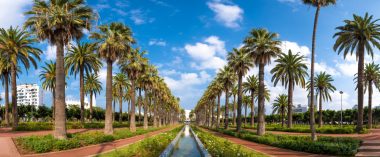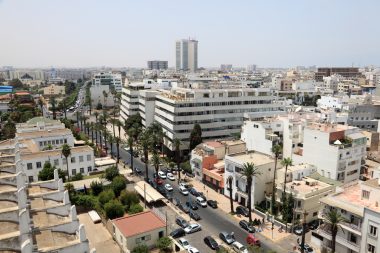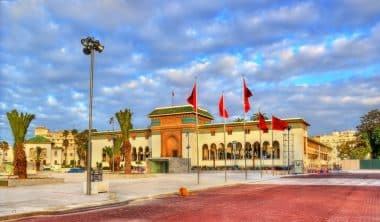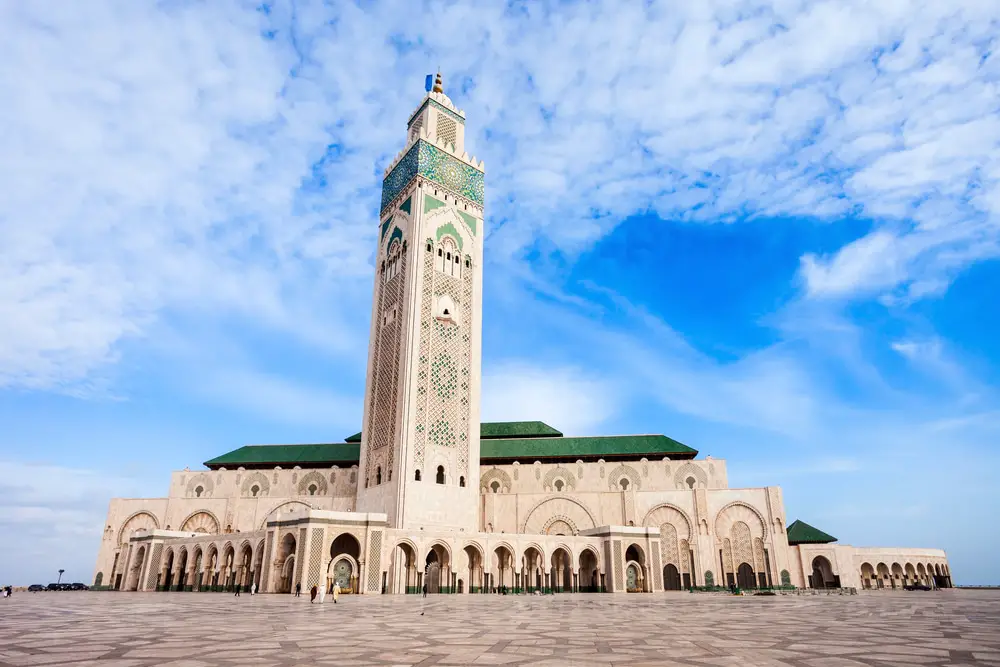Who doesn’t first think of the classic film Casablanca when they think of Morocco’s largest city? This has just as little to do with the traditional image of the country as the metropolis itself. The cliché of the Orient is not served here. This is precisely why Casablanca is worth a visit.
To anticipate it right away: It was not in Casablanca that Humphrey Bogart looked deep into the eyes of his “little one”. That was in Hollywood. And Rick’s Café has sprung from the screenwriter’s imagination. Disappointed? There is no reason for that. In the port city on the Atlantic, the Morocco of the present awaits the traveler. A visit completes the picture that you should take home with you of this fascinating country.
Modern Morocco

With its 3.6 million inhabitants, Casablanca is the largest city in Morocco and at the same time the economic center. Precisely because this metropolis does not correspond to the image of the Orient at all, it is able to surprise and win over its visitors.
French colonialism has left its mark on architecture and urban planning. Art Deco buildings and wide boulevards from the first half of the twentieth century characterize the cityscape. Occasionally, contemporary palaces and high-rise buildings made of glass and stainless steel squeeze into the vacant lots.
Even the places of worship here are modern, especially the Hassan II Mosque. This was built directly into the ocean on the edge of the city center. The building was completed in 1993 and offers space for 25000 worshippers, who enjoy underfloor heating in winter and a gigantic sunroof in summer. From the 210-meter-high minaret, a laser beam in the night sky points the way to Mecca.
A metropolis with history
Casablanca: That sounds exotic, but completely un-Moroccan. How does a city of the Orient get a Spanish name?
This is a legacy of the colonial past. The port city on the Atlantic developed from a pirate nest to a flourishing trading port that aroused the desires of Portuguese, Spanish, Berbers and Moors. But it was the French colonial power that left clear traces in the cityscape. In 1956, Morocco was granted independence. Since then, time seems to stand still.
For European observers, the lively hustle and bustle in the streets against this modern backdrop is unusual. Overloaded two-wheelers and donkey carts are common means of transport here. The proportion of men among the numerous passers-by is remarkably high.
Nevertheless, Casablanca is a cosmopolitan city where a Western lifestyle is tolerated. In addition to mosques, churches and synagogues also characterize the cityscape.
Attractions in Casablanca

The centre of Casablanca is the imposing Mohammed V Square, around which important administrative buildings are gathered. The “Grand Théâtre” sets a futuristic accent. Right next door, the extensive park of the Arab League invites you to take a stroll. Here, the cosmopolitan metropolis finally gets an oriental touch.
In the La Corniche district, clubs, hotels and restaurants line the palm-lined “Boulevard de l’Océan Atlantique”. The sandy beaches with their beach clubs are reminiscent of the sophisticated seaside resorts of the French Riviera.
This Casablanca neighbourhood has its own charm. Anyone strolling along the boulevard here gets the impression that the development in the fifties of the last century has come to a standstill.
The whole city in general, but La Corniche in particular, have taken on plenty of patina. Here you feel like you’ve been transported back to the time of old French black-and-white films. It would not be a surprise if suddenly the young Jean-Paul Belmondo casually came around the corner with a Gauloise between his lips.
La Corniche is almost within earshot of the muezzin, who calls the devout Muslims to prayer from the minaret of the modern Hassan II mosque. Although the advantages of this monumental building have already been praised, it should be added at this point that a visit by “unbelievers” is possible. This makes this mosque of superlatives the top sight in Casablanca.
Hollywood instead of oriental flair
If anything, you will find the original Morocco in the old town. Typical for Moroccan cities, this district is called Medina. Here you quickly get lost in the countless alleys and side streets.
But even here you come across traces of the recent past:
As a tribute to the famous film classic with Ingrid Bergmann and Humphrey Bogart, Rick’s Café finally opened 62 years after the film premiere on the “Boulevard Sour Jdid” directly on the city wall of the medina. In a city villa in typical colonial style, guests can expect American-Moroccan experience gastronomy. The setting and a pianist create the ambience of the forties while enjoying a sophisticated dinner of couscous, apple pie, mint tea and gin and tonic.
In search of oriental flair, the traveller cannot avoid expanding his horizons beyond the urban area.
Casablanca and Rabat in a double pack
It is advisable to combine a visit to Casablanca with a flying visit to the capital Rabat . The approximately 90 kilometers can be quickly bridged by train or via the highway. In the main residence of the Moroccan monarch, the dream of 1001 Nights comes true. The palace itself cannot be visited, but it is located in a fortress that is worth seeing and is open to the public. The area is guarded by guards in colorful uniforms. This place is a must-see for all royalists. If the ambience seems too kitschy and operetta-like for you, your oriental dream can be fulfilled authentically in the Kasbah, an old fortress on the Atlantic.
Top attractions in Casablanca
Hassan II Mosque
: One of the city’s landmarks and one of the largest mosques in the world. The mosque stands directly on the Atlantic Ocean and has a huge minaret, which is considered the tallest in the world. It is one of the few religious buildings in Morocco that can also be visited by non-Muslims.- Casablanca Old Town (Medina): Casablanca’s traditional medina is smaller and less touristy than those in other Moroccan cities, but it offers a glimpse of life in the city before French colonial architecture took its influence. Here you will find narrow streets, small shops and the everyday life of the locals.
-

Palace of Justice on Mohammed V Square in Casablanca, Image: Leonid Andronov / shuttersrtock Place Mohammed V: A central square in Casablanca, surrounded by impressive Mauresque-style public buildings built during the French colonial period. The square is a popular meeting place and offers some nice photo opportunities.
- Corniche of Ain Diab: The beach promenade of Ain Diab is particularly popular with locals and tourists. Here you can go for a walk, stop at cafés and restaurants or relax on the beaches.
- Casablanca Markets: The Central Market (Marché Central) is famous for its variety of fresh produce, seafood, flowers and local specialties. It is a lively place to experience Moroccan culture and cuisine.
- Mahkama du Pacha: This impressive Hispano-Mauresque building once served as a courthouse and parliament. It is known for its beautiful architecture, including ornate wood carvings and mosaic work.
- Quartier Habous: Also known as the New Medina, this is a district built in the 1930s to combine traditional Moroccan architecture with modern requirements. Here you will find craft shops, bakeries selling traditional Moroccan bread, and the Royal Palace of Casablanca.
- Cathédrale Sacré-Cœur: A former Catholic cathedral built in the Art Deco style. Although it is no longer used for church services, it is interesting for its architecture and as an exhibition space.
Weather in Casablanca
| Month | Average maximum temperature (°C) | Average low temperature (°C) | Precipitation (mm) |
|---|---|---|---|
| January | 17 | 8 | 75 |
| February | 18 | 9 | 50 |
| March | 20 | 11 | 40 |
| April | 22 | 12 | 30 |
| May | 24 | 14 | 10 |
| June | 26 | 17 | 5 |
| July | 28 | 19 | 2 |
| August | 28 | 20 | 2 |
| September | 27 | 18 | 5 |
| October | 25 | 16 | 20 |
| November | 22 | 12 | 40 |
| December | 18 | 9 | 60 |


